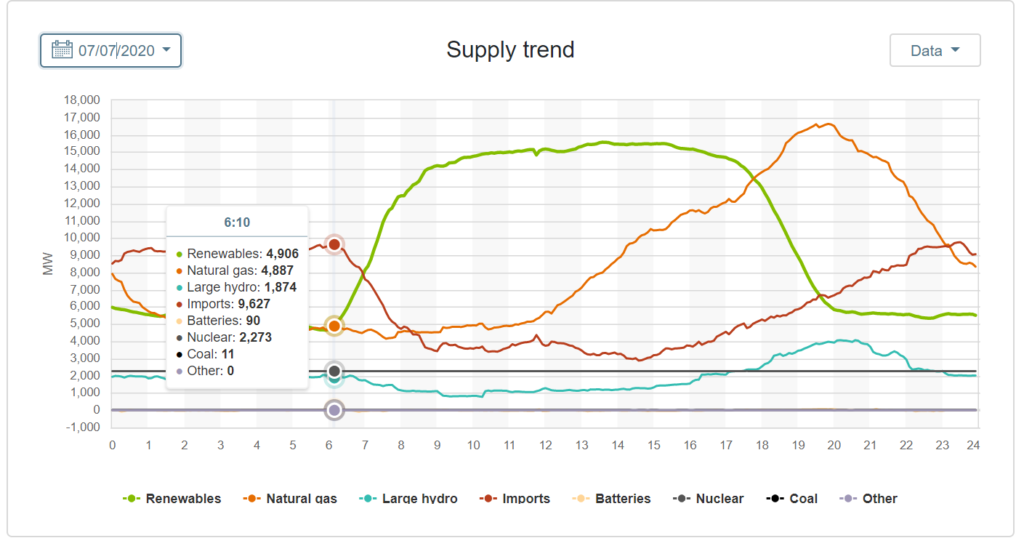California Will Use Diesel This Summer (and Imports) To Keep The Lights On
California is often thought of as a leader on environmental issues by moderates and liberals who sincerely want what’s best for the planet. However, there is a growing realization among environmental activists, like Michael Shellenberger, that attempts by California to add more wind and solar onto its grid are not only having adverse consequences for California’s economy, but also its environment.
Bloomberg News recently reported that California would use diesel-powered generators to keep some electricity flowing when the utility proactively cuts power to prevent live wires from sparking fires in high wind.
“State regulators signed off Thursday on PG&E’s plan to use about 450 megawatts of diesel generation to power homes, businesses, hospitals and other critical facilities as part of the utility’s effort to reduce disruptions during the shutoffs.”
California has been forced to shut off power for more than 3 million residents and businesses due to the threat of wildfires being started from neglected power lines and decades of bad forest management that have left the state full of fuel to burn. Both of these contributing factors to the wildfires could have been avoided with better decisions made by lawmakers.
According to Forbes:
“In an (admirable) effort to push for a cleaner and more efficient power sector, state leaders pressured utilities like PG&E to meet ambitious renewable energy requirements. This caused PG&E to redirect company resources away from basic maintenance and upkeep of existing infrastructure. Senate Bill 100 – which aims to make California’s electric grid fossil-fuel free by 2045 – is one such lofty green energy target. PG&E spent $44 billion on power purchase agreements with renewable providers but only 1.5 billion on maintenance expenses in 2017.”
California’s obsession with renewables has resulted in the worst of both worlds, skyrocketing electricity prices, and billions of dollars in damages caused by fires resulting from their focus on installing renewables, instead of maintaining their existing electricity infrastructure. On top of it all, California will also experience enormous economic losses due to the blackouts.
I reached out to Michael Wara of the Stanford Woods Institute for the Environment, who has given estimates to outlets such as MSN, and his ballpark figure for the 2019 blackouts was approximately $10 billion for residential and commercial customers who were forced to go without electricity for up to four days at at time.
To avoid these costly blackouts, California will use diesel generators, which emit more pollutants than natural gas power plants. California’s focus on renewables also means that it relies heavily upon on imports of electricity from neighboring states, like Arizona and Nevada.
The graph below is from the California Independent Systems Operator (CAISO), and it shows despite California’s heavy investments in wind and solar, the state was still dependent upon imports of electricity generated from coal, natural gas, and nuclear energy for every hour of the day. You can also see a huge spike in natural gas generation (in orange) as the grid operators prepared for solar power to fall as the sun sets in the evening.

The graph above helps show that even in California, the grid needs reliable sources of energy, and that renewables simply do not meet the demand for power in America’s most populated state. The environment benefits most from reliable, energy-dense sources of power like nuclear, natural gas, and coal, while renewables require vast quantities of land and metals while providing very little reliability to the grid. As a result, we use more land to generate the same amount of electricity at a higher cost, harming the environment and the economy.